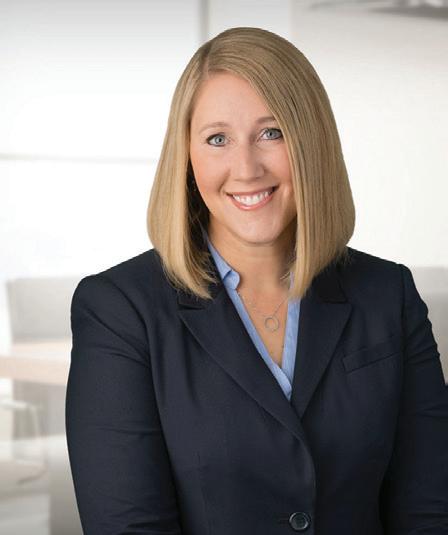ARCHITECTS ARE PRESERVING THE PAST
HISTORIC BUILDINGS
TELL STORIES OF THEIR COMMUNITIES PAGE 12

TECHNOLOGY ADVANCES ARE IMPROVING ENGINEERING PAGE 18
MANUFACTURERS ARE BUILDING WORKFORCES FROM WITHIN PAGE 22

TELL STORIES OF THEIR COMMUNITIES PAGE 12

TECHNOLOGY ADVANCES ARE IMPROVING ENGINEERING PAGE 18
MANUFACTURERS ARE BUILDING WORKFORCES FROM WITHIN PAGE 22




A l u x u r y g eta wa y i s c l os e r t h a n yo u t h i n k I n D ow ntow n G ra n d Fo r k s , T h e O l i ve
A n n H ote l u n p a c k s a v i b ra n t v i s i o n w i t h i n a h i s to r i c re n ova t i o n a n d ex p a n s i o n
o f t h e 1915 F i r s t N a t i o n a l B a n k b u i l d i n g A s o p h i s t i c a t e d “ s t a y w i t h a s t o r y ”
we l c o m es g u es t s i nto 79 b o ut i q u e h ote l ro o m s , f i n e - d i n i n g ex p e r i e n c es , a s ta te -
of - t h e - a r t f i t n es s c e nte r, a b o a rd ro o m, a n d e l eva te d eve nt s p a c es . T h i s i s g o o d
w o r k f o r t h e g r o w t h o f G r e a t e r G r a n d F o r k s l e t t i n g U N D ’ s r i c h a v i a t i o n
h i s t o r y a n d t h e p i o n e e r i n g l e g a c y o f O l i v e A n n B e e c h , t h e “ F i r s t L a d y o f
Av i a t i o n , ” ta ke f l i g ht by d es i g n




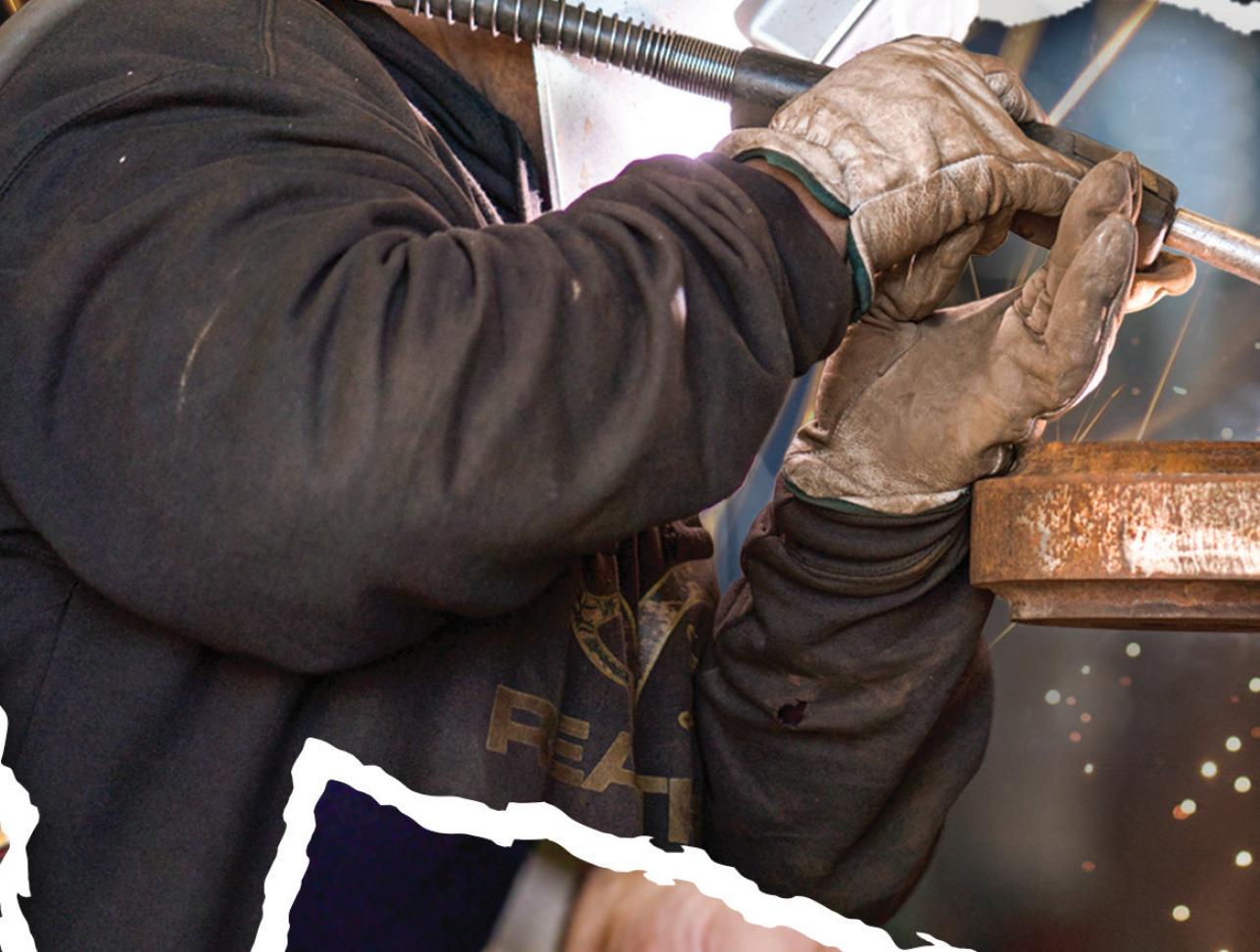


We
$98,846 3.8 Million 583,000 Oct. 4, 2024
Average annual income of US manufacturing employees in 2024

Manufacturing jobs to fill between now and 2033
Reported manufacturing job openings as of Februar y 2024 Is National Manufacturing Day


The team at West Acres Development knows the first step toward providing a great experience for mall guests is to take care of their employees. Communicating with empathy and care is key.
West Acres’ benefits program was recently given a new stock of inspiration, courtesy of a collaboration with Blue Cross Blue Shield of North Dakota. This partnership, through the BCBSND Elevate program, sparked new ideas, brought renewed emphasis to holistic well-being and encouraged team managers to lead by example.
“Happy and healthy employees make work more fun for everyone and the work still gets done. Well-being initiatives do not have to be costly. Caring for your employees is free!” –HR Manager Janna Curry from West Acres Development





























G R O W Y O U R
B U S I N E S S .




THE SOUTH DAKOTA STATE THEATRE, LOCATED IN SIOUX FALLS, WAS BUILT IN 1926 BY THE HENRY CARLSON COMPANY TO SHOWCASE SILENT FILM AND VAUDEVILLE PERFORMANCES. IT CLOSED IN 1991 AND FELL INTO DISREPAIR. THE BUILDING WAS EVENTUALLY RENOVATED AND A NEW MARQUEE WAS INSTALLED. THE BUILDING IS IN OPERATION AGAIN AS A MOVIE THEATER. / COURTESY CIPHER IMAGING
ARCHITECTS ARE PRESERVING THE PAST BY CARRIE MCDERMOTT
TECHNOLOGY ADVANCES ARE IMPROVING ENGINEERING BY CARRIE MCDERMOTT
MANUFACTURERS ARE BUILDING WORKFORCES FROM WITHIN BY ANDREA BORSVOLD

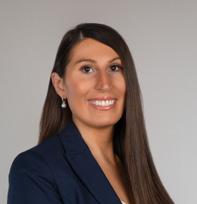
REBECCA BENNEK
ENCLAVE NAMES REBECCA BENNEK AS DIRECTOR OF INVESTOR RELATIONS
MINNEAPOLIS, MINN. • ENCLAVE PROUDLY WELCOMES REBECCA BENNEK AS DIRECTOR OF INVESTOR RELATIONS. IN HER ROLE, BENNEK WILL BE INSTRUMENTAL IN COMMUNICATING THE VISION AND PROGRESS OF ENCLAVE’S INVESTMENT PLATFORM, FOSTERING TRUST AND CONFIDENCE WITH CURRENT AND PROSPECTIVE INVESTORS. SHE BRINGS OVER 10 YEARS OF RELATED EXPERIENCE, HAVING MOST RECENTLY SERVED AS DIRECTOR OF INVESTOR RELATIONS FOR AN INTERNATIONAL PRIVATE EQUITY FIRM, WHERE SHE SUPPORTED A PORTFOLIO OF $4 BILLION IN ASSETS UNDER MANAGEMENT. “THE INVESTOR EXPERIENCE IS PARAMOUNT TO OUR TEAM AT ENCLAVE, INFORMED AND CONFIDENT INVESTORS ARE THE FOUNDATION OF OUR SUCCESS,” SAID JOSH WILCOX, PRESIDENT OF DEVELOPMENT AND INVESTMENTS. “REBECCA WILL BE AN INVALUABLE RESOURCE TO OUR SHAREHOLDERS, SERVING AS A PRIMARY VOICE ON INVESTMENT PERFORMANCE AND STRATEGIES FOCUSED ON CREATING UNIQUE VALUE FOR OUR INVESTORS.” A LEADING MULTIFAMILY AND INDUSTRIAL REAL ESTATE INVESTMENT FIRM WITH IN-HOUSE DEVELOPMENT, CONSTRUCTION AND MANAGEMENT, ENCLAVE’S COMPLETED OVER 150 PROJECTS ACROSS THE MIDWEST AND MOUNTAIN WEST SINCE ITS INCEPTION IN 2011. AS LONG-TERM HOLDERS AND CO-INVESTORS, ENCLAVE’S TRACK RECORD IS ROOTED IN DELIVERING HIGH-QUALITY ASSETS IN WELL-MATCHED LOCATIONS THAT ACHIEVE STRONG OCCUPANCY, RENT GROWTH AND ASSET APPRECIATION. WITH OVER $1.5 BILLION IN ASSETS UNDER MANAGEMENT, ENCLAVE CONSISTENTLY DELIVERS INDUSTRY-LEADING RETURNS. “ENCLAVE’S ASSET PERFORMANCE, GROWING PORTFOLIO AND PLANNED INVESTMENT VEHICLES PRESENT EXCITING OPPORTUNITIES FOR INVESTORS,” SAID BENNEK. “I LOOK FORWARD TO CONVEYING THEIR UNIQUE EQUITY OFFERINGS TO STRENGTHEN OUR INVESTOR COMMUNITY.” BENNEK WILL BE LOCATED AT THE FIRM’S ST. LOUIS PARK OFFICE.
VISIT WWW.PRAIRIEBUSINESSMAGAZINE.COM TO SEE THESE AND OTHER NEW HIRES, PROMOTIONS AND AWARD WINNERS IN THE REGION.
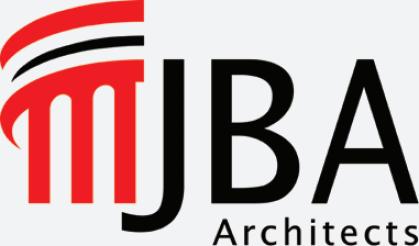



For over 41 years, MJBA has specialized in preserving and repurposing historic buildings at higher education institutions across the tri-state region With expertise in restoration, MJBA has completed over 150 projects, including detailed surveys, accessibility improvements, and full property renovations complying with federal and state historic rehabilitation guidelines Notably, NDSU’s Renaissance Hall, formerly the old Northern School Supply, stands as North Dakota’s first LEED certified project, benefiting from both federal and state tax credits facilitated by MJBA.









One of the features that can make a community unique is its buildings. Every city and town I’ve lived in or visited in the U.S. seems to have at least one or two historic buildings that are memorable. They’ve been preserved, renovated and adapted for modern-day society. Not only are they interesting to look at, their histories are often fascinating. I like learning about a town’s founders, the movers and shakers of the day, who built these structures or worked within.
I grew up in and around Riverside, California, which boasts the Mission Inn Hotel & Spa, a gorgeous Mission Revival-style building with a storied history located in the city’s busy downtown. It started as an adobe boarding house in 1876 and became a full-service hotel in the early 1900s. Nearly 150 years later, it’s been expanded, hosted U.S. presidents and was even the setting for a few films. I’ve never stayed there but I’ve toured it, and it’s always an educational and enjoyable visit. The hotel’s Festival of Lights at Christmas is a must-see.
Our region may not have the Mission Inn, but it’s full of wonderful old buildings that provide a sense of place for their communities. We have a connection to those buildings whether we spend time in them or just drive by them regularly.
Wahpeton has many historic buildings lining Dakota Avenue, including the Red Door Art Gallery, housed in an old National Bank building and renovated by volunteers. Fargo has numerous historic buildings that have been saved and adapted for new uses such as restaurants and retail shops, as well as historic residences. Many courthouses around North Dakota and South Dakota are right around that century mark.
For the cover feature this month, we spoke to architects about the importance of preserving historic buildings and what those complicated projects entail. They shared resources for those interested in preserving historic buildings and gave examples of challenging situations they’ve encountered.
We also talked to a few engineers about their favorite technology tools and how those are helping them with surveying, data collection and design. Our manufacturing piece focuses on filling workforce shortages from within.
Next month, Prairie Business will begin celebrating its 25th year of publication, and we’ll have special features throughout the following 12 months recognizing our silver anniversary. We’ll also have our 50 Best Places to Work feature, which highlights dozens of excellent employers in our region.
As always, we appreciate hearing from our readers and advertising partners for business news and story ideas. Your support of Prairie Business is much appreciated!
If you’d like to be added to our newsletter mailing list, visit https://www.grandforksherald.com/newsletterand scroll down to select Prairie Business. Enter your email at the bottom and you’re all set.
Until next month, Carrie McDermott
I look forward to hearing from you at cmcdermott@prairiebusinessmagazine.com or 701-780-1276.
PUBLISHER
KORRIE WENZEL
AD DIRECTOR
STACI LORD
EDITOR
CARRIE MCDERMOTT
CIRCULATION MANAGER
BETH BOHLMAN
LAYOUT DESIGN
JAMIE HOLTE
ACCOUNT MANAGER
NICHOLE ERTMAN
800.477.6572 EXT. 1162 NERTMAN@ PRAIRIEBUSINESSMAGAZINE.COM
Prairie Business magazine is published monthly by the Grand Forks Herald and Forum Communications Company with offices at 3535 31st St. S., Suite 205, Grand Forks, ND 58201.
Subscriptions are available free of charge. Back issue quantities are limited and subject to availability ($2/copy prepaid). The opinions of writers featured in Prairie Business are their own. Unsolicited manuscripts, photographs, artwork are encouraged but will not be returned without a self-addressed, stamped envelope.
SUBSCRIPTIONS
Subscriptions are free prairiebusinessmagazine.com
ADDRESS CORRECTIONS
Prairie Business magazine PO Box 5359, Grand Forks ND 58206-5359
Beth Bohlman: bbohlman@ prairiebusinessmagazine.com
ONLINE
www.prairiebusinessmagazine.com
W e ’ l l h e l p y o u

a n I T p l a n a r o u n d
y o u r n e e d s a n d
b u d g e t w i t h
F l e x C a r e .
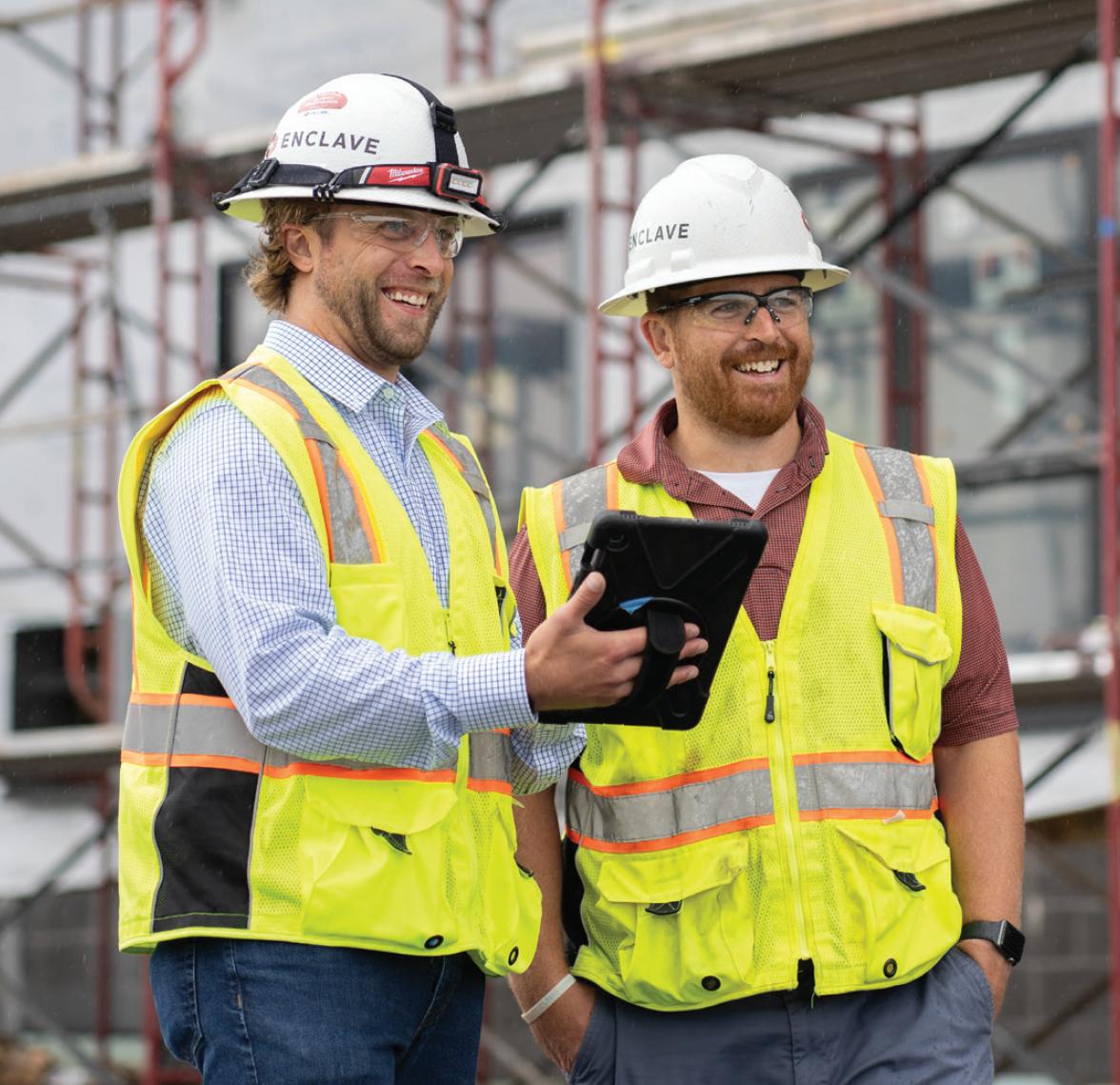
R e d u c e
I n c r e a s e
H i g h - e n d
s k i l l s e t s
u p t i m e P e a c e o f m i n d
W i t h o u r m e n u - d r i v e n s t r u c t u r e , a n d
N O l o n g t e r m c o n t r a c t s , y o u c a n
s e l e c t t h e s e r v i c e s a n d s u p p o r t y o u
n e e d , f o r h o w e v e r l o n g y o u n e e d i t .
c o s t s n e t c e n t e r. n e t
Fro m m u l t i f a m i l y to i n d u s t r i a l ,
h e a l t h c a re a n d eve r y t h i n g i n
b e t w e e n , o u r ex p e r i e n c e d te a m
u n d e r s ta n d s h ow b u i l d i n g s of a l l
t y p e s c o m e to g e t h e r. W i t h ove r 1 5 0
p ro j e c t s c o m p l e te d , w e ’l l t ra n s f o r m
yo u r v i s i o n i n to a re a l i t y.


THE SOUTH DAKOTA STATE THEATRE, LOCATED IN SIOUX FALLS, WAS BUILT IN 1926 BY THE HENRY CARLSON COMPANY TO SHOWCASE SILENT FILM AND VAUDEVILLE PERFORMANCES. IT CLOSED IN 1991 AND FELL INTO DISREPAIR. THE BUILDING WAS EVENTUALLY RENOVATED AND A NEW MARQUEE WAS INSTALLED. THE THEATER IS IN OPERATION AGAIN AS A MOVIE THEATER. / COURTESY CIPHER IMAGING
BY CARRIE MCDERMOTT
Historic buildings dot many communities around the region. They anchor downtown neighborhoods and business districts and can denote opera houses, churches, schools or commercial ventures. They might be courthouses, post offices or warehouses. These old buildings hold a wealth of history for those willing to look, research and save.
Brian Carlson, senior designer with JLG Architects in Grand Forks, said preservation is the reason he became interested in architecture in the first place.
“Our founder, Lonnie Laffen, had a passion for historic preservation. Our home office for many years, when we were just in Grand Forks, was in a historic building that was
a grocery wholesaler. JLG renovated and restored that building for our office. Since then, the vast majority of our offices, in all the communities we’re in, are in historic buildings,” he said.
Historic buildings are typically located in a city’s core and have unique characteristics. Carlson said he enjoys learning about not only how an old building was constructed, but what it housed over the years.


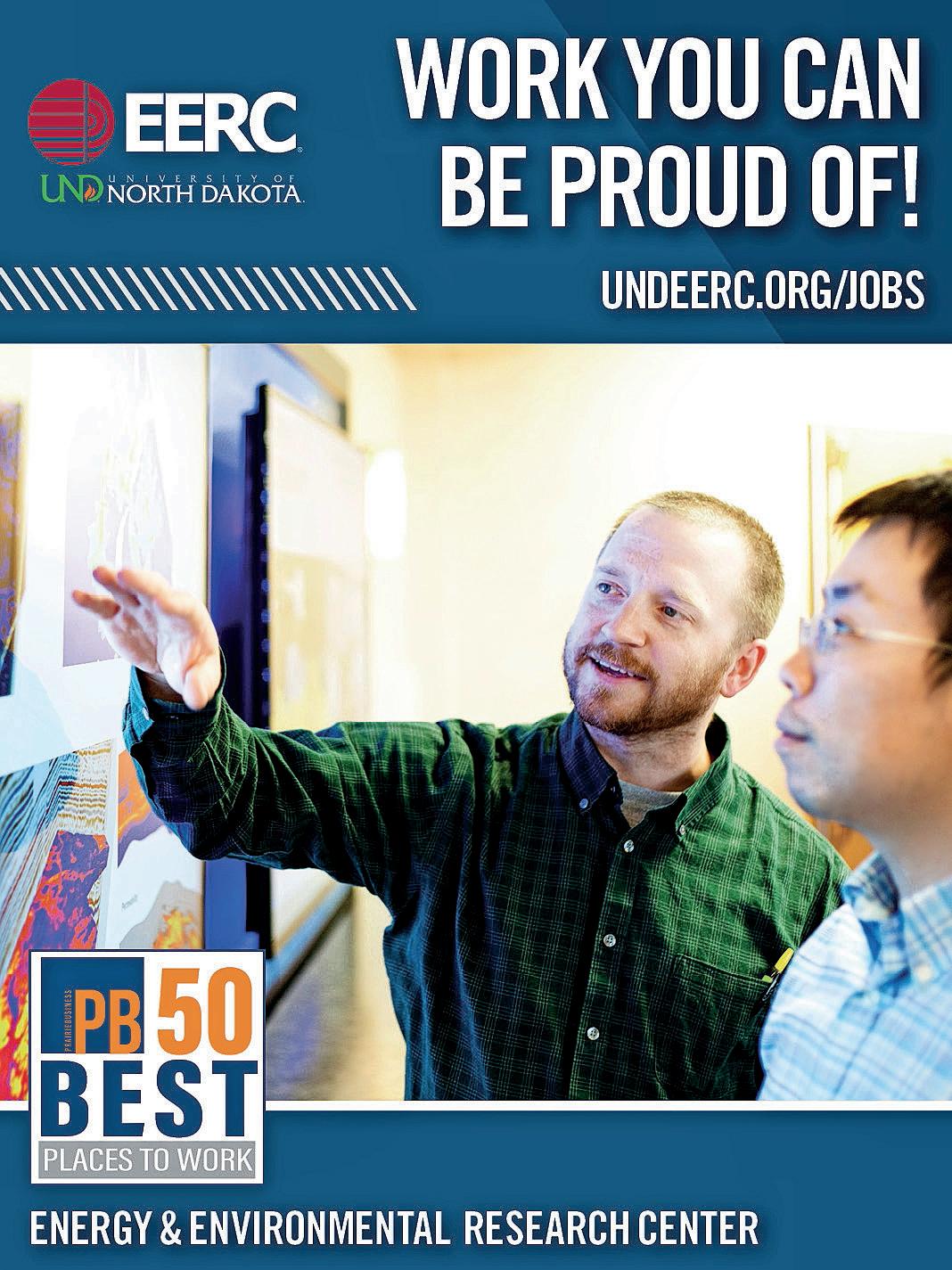



At Ulteig, we take on complex projects, but our mission is simple: deliver reliable infrastructure solutions that serve as the foundation for communities to thrive In the Lifeline Sectors® of Power, Renewables, Transportation and Water, our approach is rooted in decades of thoughtful engineering and a deep commitment to enhancing the places where we work. Every energy project, road and water system is a testament to practical, sustainable progress. We’re not just engineers; we’re people invested in a shared future START YOUR NEXT PROJECT WITH ULTEIG.

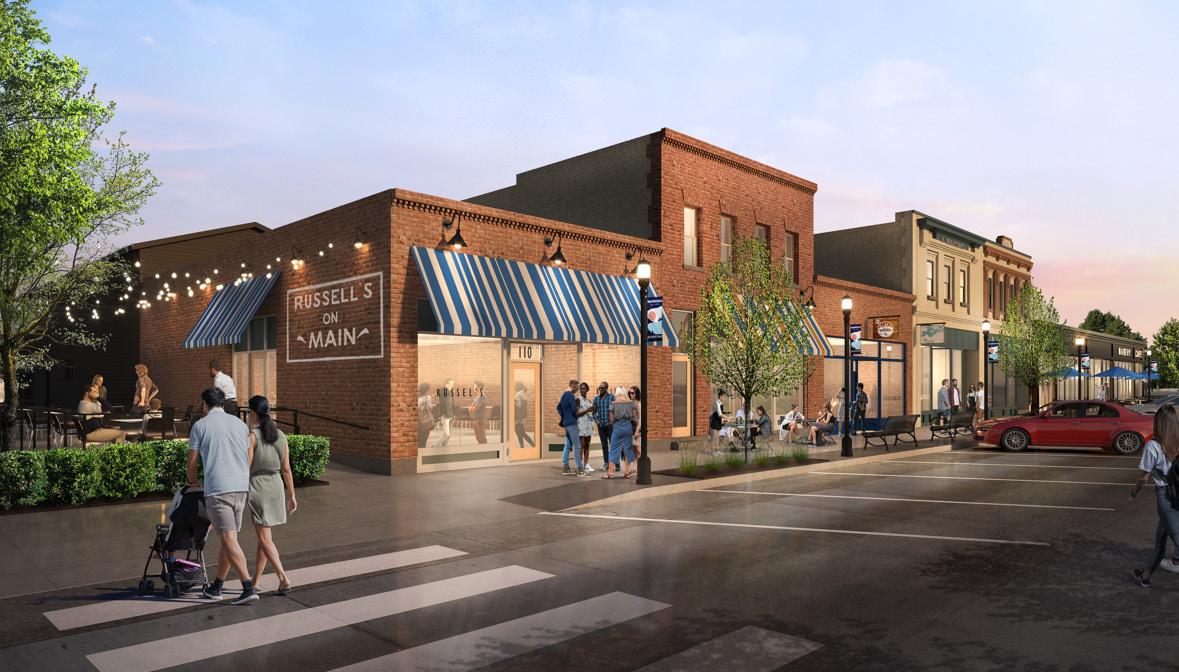
A recently completed historic preservation and renovation project JLG completed was in downtown Warroad, Minnesota.
“I think it’s a good representation of our smaller communities in our region. It encapsulates a lot of the ideas that are important about preservation. That project was a block downtown of five historic buildings and another building that’s not historic in nature,” he said.
JLG’s client teamed up with the area’s historical society and recreated a list of all the businesses and tenants in those buildings over the years. Seeing the names of prominent people and founders of the community made the project more engaging for not only the client, but the community, Carlson said.
“You see the buildings every day but don’t always know the stories behind them,” he said.
Historic buildings are a connection to the past that are interacted with daily. They’re unique to each community and are often what gives a community its own distinctive character and identity.
“It’s about a vibrant economically thriving city center for a lot of our clients,” Carlson said.
Jeremy Altman, principal architect at Architecture Inc. in Sioux Falls, says sustainability is one of the biggest reasons historic preservation is important to him and his firm.
“By taking on a new life, it uses up fewer resources to get that to be a viable structure again. There’s often already utilities in place, infrastructure in place, and a lot of the bones are solid,” he said. “That’s one of the things about these older buildings, they were built pretty solidly, and apart from some major disasters, the structures in most cases are still quite good and you can make use of the shell of the building. You can save on materials and resources and for owners, it can be good because they can focus what their budget can do on the interiors and make the space work for them.”

Preserving a historic building also connects with local craftsmen, because they have a history working with those exact parts and pieces that make up a building.
“You’re keeping it local, they’re the ones who are going to know what kind of brick that was, they know exactly what clay was used. You may not get an exact match but you’re best served by using them,” Altman said. “A lot of the

We wor ked with ever ybod y, from the architec t s to the engineer s to the de signer s s tuff they had exper tise in that I didn ’ t even k now that I needed to k now about T hey were there with me the whole way.


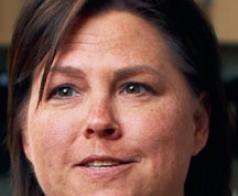

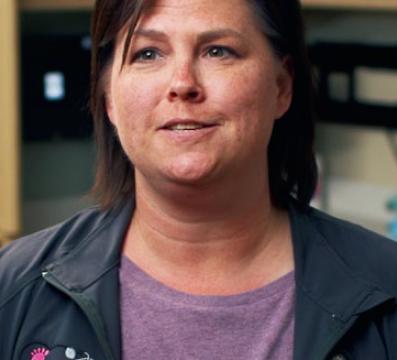




S o m e o f t h e r e a s o n s K L J i s o n e o f t h e b e s t p l a c e s t o w o r k .


















details and a lot of the character of the building comes from nonstandard building materials that have to be measured on-site. You need someone who can be on site and that usually works out to being someone local and familiar with the building. It has a ripple effect on the local economy when you’re able to do a renovation project.”
Taking on a historic preservation project is not for the faint of heart. It can be expensive and time-consuming. Experts advise those interested in saving old buildings to reach out to their state historic preservation offices for information and resources. The National Park Service has a Technical Preservation Services arm that develops national standards and guidelines for preserving, rehabilitating, restoring and reconstructing historic properties. The agency also administers the Federal Historic Tax Incentives program in partnership with state historic preservation offices. That program encourages private sector investment in the rehabilitation and re-use of historic buildings.
The American Institute of Architects (AIA) is a helpful resource to find a licensed architect in good standing. Jeff Nelson, president of the AIA South Dakota chapter and president at Falls Architecture Studio in Sioux Falls, advises finding someone “who has the experience and can provide guidance in doing building analysis for existing structures with regards to preservation and renovations.”

The AIA has established a framework for design excellence, which has a goal to work towards a zero-carbon, equitable, resilient and a healthy built environment, Nelson said. A national level resource is the U.S. Dept. of Interior’s Historic Preservation branch, which provides considerable information.
Michael J. Burns, founder and principal with Michael J. Burns Architects, Ltd., based in Moorhead, Minnesota, has years of experience and expertise in historic preservation and adaptive reuse. His firm’s flagship project is Renaissance Hall, which is home to NDSU’s architecture, landscape architecture and visual arts departments in downtown Fargo.

The four-story, 52,000-square-foot building was constructed in 1903 and originally housed a farm implement warehouse and dealership. It later housed Northern School Supply for 86 years until it closed in 1997. Kilbourne Group founder Doug Burgum chose to purchase the building in 2000 and save it from the wrecking ball.
Burns, who has been interested in history since he was a child, said the complexity and layers of administrative work, in addition to the physical parameters of the Renaissance Hall building, made it a challenging but gratifying project.
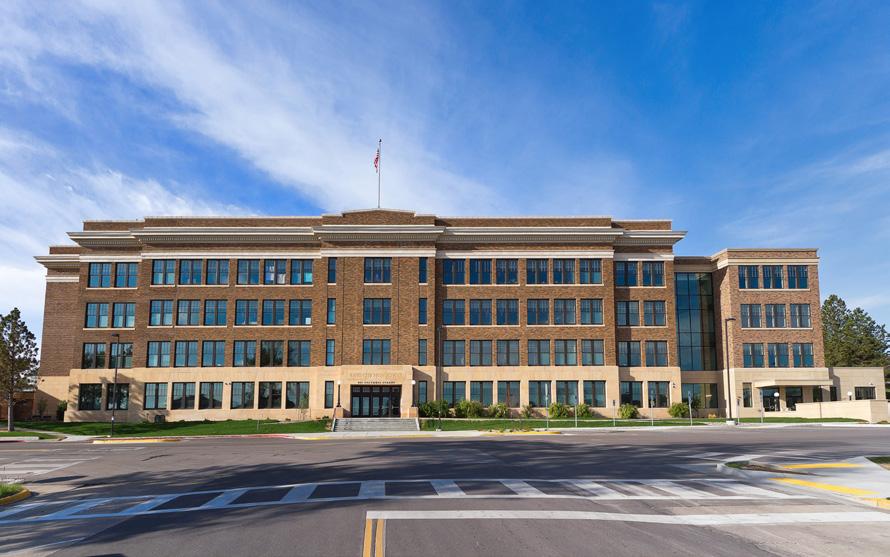
ARCHITECTURE INCORPORATED WORKED ON THE RAPID CITY HIGH SCHOOL REMODELING AND RENOVATION OF THE AUDITORIUM AT DAKOTA MIDDLE SCHOOL INTO A PERFORMANCE SPACE FOR THE RAPID CITY COMMUNITY. / COURTESY ARCHITECTURE INC.

INTERIOR SHOT OF THE LOBBY AT HOTEL ON PHILLIPS IN SIOUX FALLS. THE BUILDING WAS TRANSFORMED A CENTURY-OLD FORMER GREAT WESTERN BANK BUILDING INTO A 90-ROOM BOUTIQUE HOTEL. ARCHITECT PERSPECTIVE INC. AND CONSTRUCTION MANAGER AT RISK JOURNEY GROUP BEGAN WORK IN 2017. THE LEGACY PROJECT IS NOW COMPLETE AND OPEN FOR BUSINESS. / COURTESY JEFF VEIRE
Other notable projects his firm has worked on include renovating Family HealthCare’s home in the former Pence Automotive building and the Great Northern Railroad Depot building, both in downtown Fargo.
“I like being able to do the adaptive reuse projects, which I like to call tax act projects,” Burns said. “Both the Family HealthCare and Renaissance Hall projects were tax act projects, which is administered by the National Parks Service. You have to follow specific guidelines when designing those.”
Bobbi Hepper Olson is the founder and principal of Hepper Olson Architects in Buxton, North Dakota. Her firm sits inside a small, fieldstone bank building that was vacant for decades. Her firm restored it to its original solid Romanesque Revival character and the staff has been working from it since 2009. Some of the bank’s unique features were preserved, including the teller panel and door trim that carry bullet holes from a bank robbery in 1933, parts of the teargas security system, and the old locks and keys to the building, according to the Society of Architectural Historians.
“I fell in love with historic preservation after the flood of 1997 in Grand Forks. I was hired to work on some of the historic storefronts on Third Street when they took down the old mall canopy on that street,” she said.
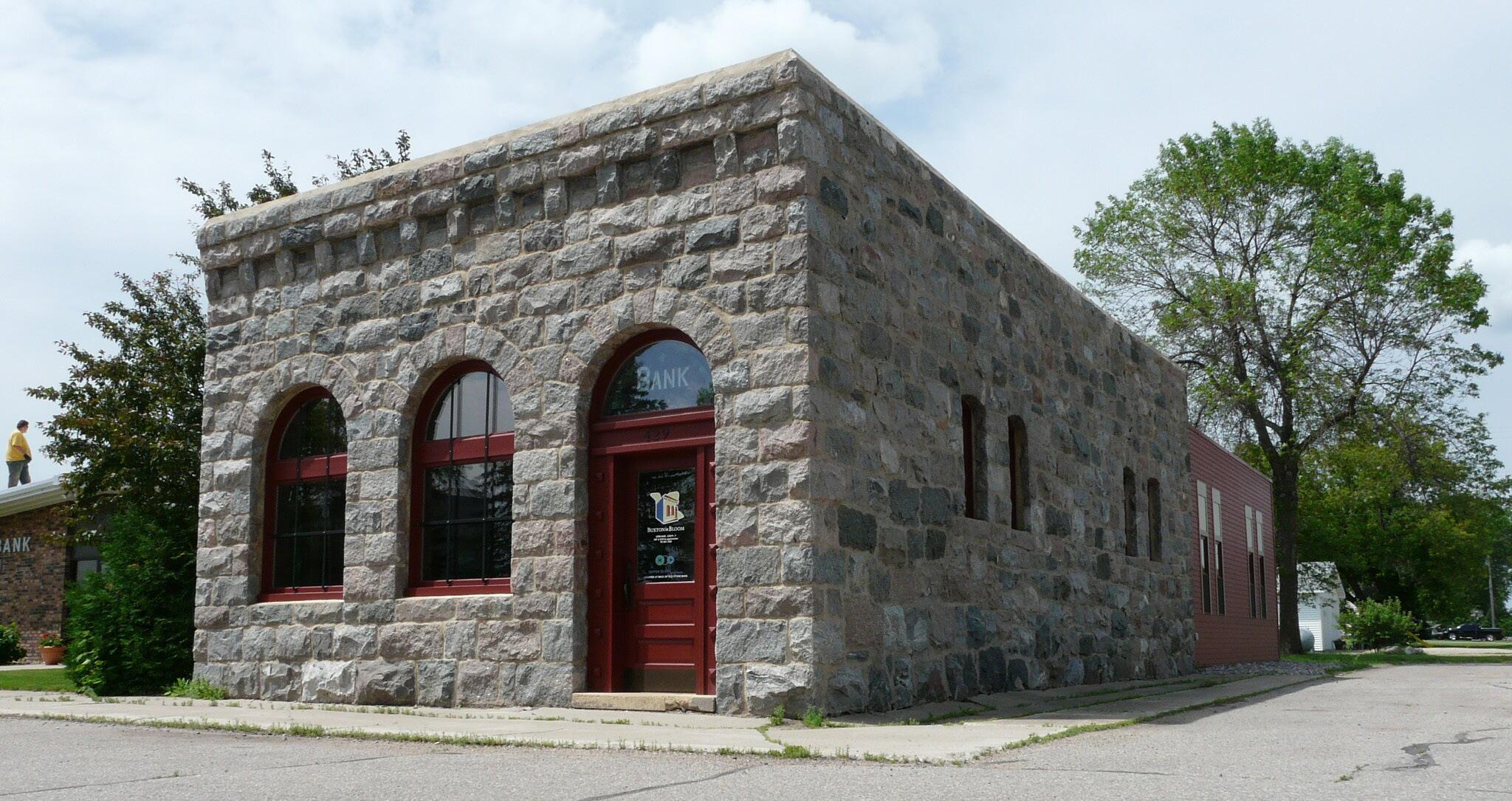
HEPPER OLSON ARCHITECTS RESTORED THIS FORMER BANK BUILDING IN BUXTON, NORTH DAKOTA, WHICH NOW SERVES AS THE FIRM’S OFFICE. / HEPPER OLSON ARCHITECTS
“Just being able to research those buildings and take them back to a certain era, I really fell in love with historic preservation through that whole process.”
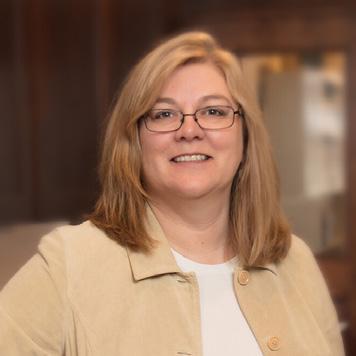
When a small town starts tearing down its history and Main Street, they end up losing their identity.
— Bobbie Hepper Olson
Besides her own office space, one of her favorite historic projects is the Walla Theater in Walhalla, North Dakota, the state’s second oldest town. Built in 1949, the theater was designed by Minnesota architect Perry E. Crosier in the Moderne style and is on the National Register of Historic Places. The theater showed movies and was a venue for annual events. It could seat 400 people and included a “cry room,” which allowed people with an unhappy child to still see and hear the film. The theater closed in 1982, and in 2008, the Gorge Arts and Heritage Council took on the project of restoring and repairing the building. It reopened in 2018.
Hepper Olson said she appreciates the knowledge she gains when doing historic preservation projects.
“When you restore an old building, you also get to see where things fail. You get a great knowledge base and some of the materials they used are so different,” she said.
Her colleague and staff architect Erin Peterson has always been intrigued by history and investigating the past.
“I love ripping up old carpet because you don’t know what you’re going to find on the floor from before. You’re looking into the past and once you really start investigating what it used to be, you can find out more about it and bring it back to something that may be more glamorous than what it may have ended up as,” Peterson said.
Adaptive reuse and accessibility are other areas of historic preservation that architects address. Meeting ADA (Americans with Disabilities Act)
standards for accessible design, updating plumbing and electrical to meet modern-day codes, and even shoring up the bones of a building can be aspects of any preservation project. And then there are heating and cooling systems to consider.
“Some of those buildings don’t have a lot of insulation in them, so we’re trying to figure out how to insulate them now without disrupting the interior or exterior characteristics of the building,” Hepper Olson said. “That’s probably the biggest challenge most of the time. Usually roofing we can get insulated but the walls can be challenging.”

Historic preservation can create jobs, boost economies and revitalize communities.
“When a small town starts tearing down its history and Main Street, they end up losing their identity,” Hepper Olson said. “When you lose your identity people don’t come back – there’s nothing to come back to see. So then it slowly dwindles and dies. I feel those communities that have saved buildings and invested in keeping their Main Streets or historic properties are the communities people want to live in. They want to live in a community that has enough pride in where they live that they take care of their surroundings and buildings. I think that’s very important.”

BY CARRIE MCDERMOTT
The use of drones is helping engineers inspect hard-to-reach areas, identify safety hazards and locate structural issues. Cameras and other sensors can be fitted to drones to allow on-site inspections and provide aerial photographs and video of locations and structures. Drones can be used to even assist with cultural inventories.

the sensors are more sensitive. Thermal imaging cameras on drones are used for inspections, for example, to determine the severity of cracking in a structure or surface. Drones can also be used in culturally sensitive areas.
“If we’re in a sensitive area, where we’re limited in what we can do, areas where tribes don’t allow people to walk, we can send over a drone with a thermal camera. We can pick out rock formations or other features and it allows us to be better stewards while working with the tribes in collaboration. It’s less invasive, rather than having someone walk or drive all over,” Steiner said.
Shane Steiner, PE, is an associate vice president of the aviation arm of KLJ Engineering and Planning Services in Bismarck. He says the technology for drones has grown leaps and bounds in the past five years, becoming an important tool for engineers at his company.
“We use it for surveying, for construction observation to check in on projects. Being able to put the drone up and take an aerial photo or a video of a loop around a project gives you an extra dimension to look for things and a way to monitor,” he said.
The attachments for drones are making just as many advancements as the drone itself. Drones are getting larger, the batteries can last longer and
Drones aren’t the only technology piece being used. Three-dimensional visualization has advanced, as well. Whether for marketing or project proposals, to show the environment or project from all angles is a benefit.
“On the aviation side, we saw the benefits, like roads going along the airports, or if we want to remove a phase of a project, what does that look like? It’s important for airports because safety is a big concern. It’s important for the air traffic tower. Their big concern is blind spots. If you put up a couple of hangars and all of a sudden the control tower can’t see part of the terminal or one of the boarding bridges or half of an apron where planes are coming to and from, that creates an issue,” Steiner said.
The 3D technology allows project teams to be proactive and alleviates any of the concerning spots.
Building Information Modeling (BIM) has been around for a couple of decades, allowing engineers of all disciplines and architects to coordinate in a virtual 3D model, Tevis Holzer said.

He’s a project manager and engineer in the structural department at Banner Associates in Brookings, South Dakota.
“Coordinating in a single model helps engineers stay on the same page, detect clashes between building components, and reduce mistakes. The more recent use of drones and sophisticated scanning systems has allowed engineers to incorporate detailed ‘as-built’ conditions into these models, which greatly reduces the need to hand-measure and document existing conditions,” Holzer said. “As BIM models become more detailed and dynamic, ‘digital twin’ models can incorporate real-time sensors from the actual building to assist engineers and building owners with operational efficiency and maintenance over the entire life of the building.”
Geographical Information Systems (GIS) provides a similar ability to track horizontal infrastructure, such as the age and condition of underground piping or the location of potholes in city streets, he added. GIS has given surveyors and planners very detailed data, allowing measuring down to 1/16 of an inch.
Engineering firm Bolton & Menk, celebrating 75 years in business this year, has created a proprietary platform called INPUTiD. The customizable web-based public engagement platform allows stakeholders and the public to provide comments and interact with one another in a visual, user-friendly mapping interface. It was used on the North Dakota Dept. of Transportation’s SMART 29 corridor plan, focusing on traffic management on Interstate 29.
“We have one on there right now for a project we’re doing in Grand Forks. People can go in and pop in their comments, such as, ‘I really like this stretch of the greenway, I use the bike path a lot,’ or ‘This intersection has always made me feel unsafe as a cyclist or pedestrian’,” said Blue Weber, the firm’s community outreach liaison. “This interactive map allows people to give us their opinion of things, and also once we start to do design elements, we can overlay those designs on INPUTiD. Maybe it’s looking at layout A, B or C,
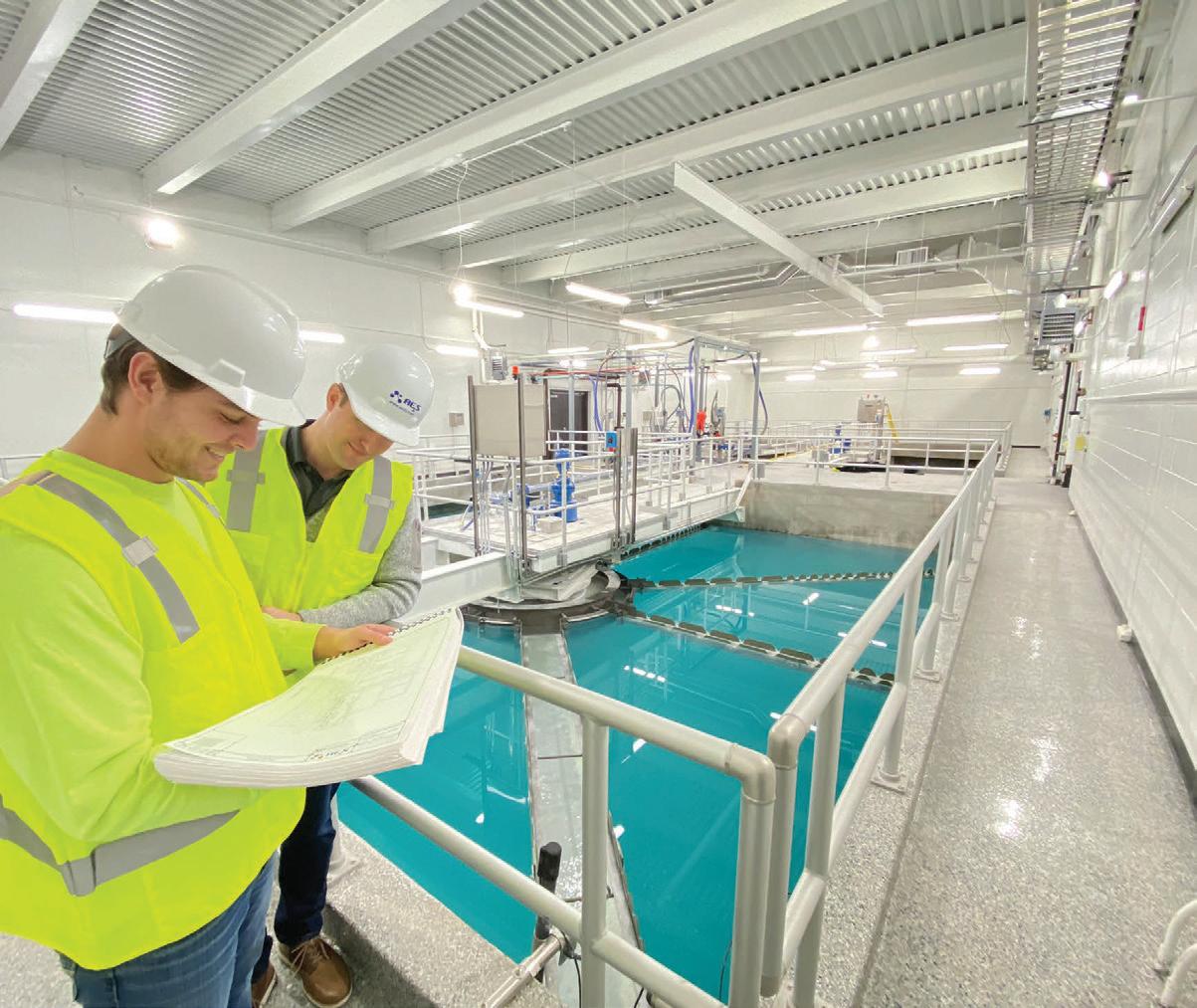

At our very core, AE2S is all about people. Beyond engineering, we are committed to empowering our clients, employee-owners, and all those around us to develop a vision for a better tomorrow.
www.ae2s.com Water Engineering and Beyond
Award-Winning Best Place to Work

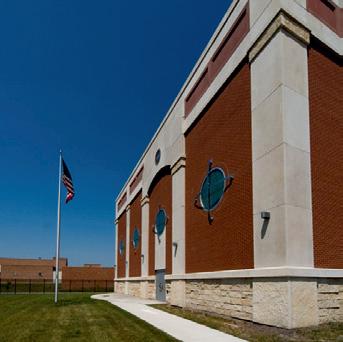

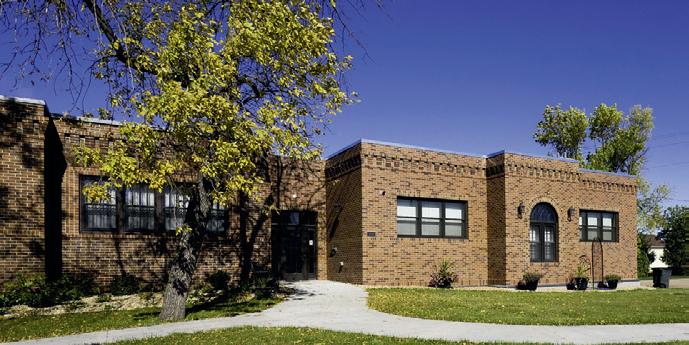
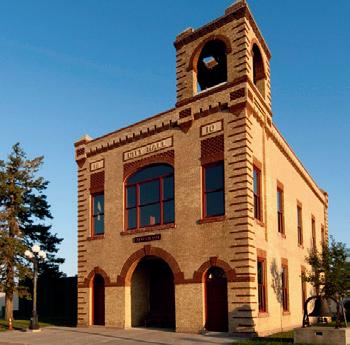


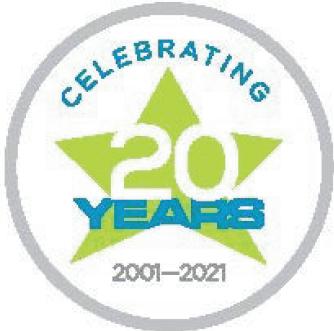
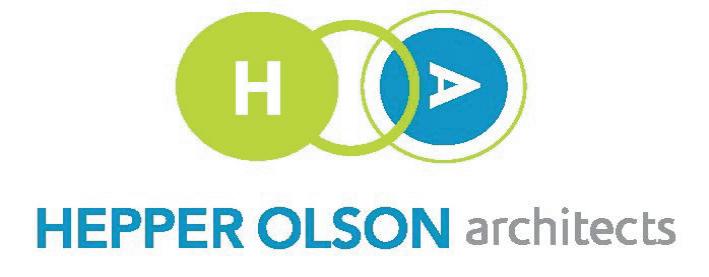
CONTINUED FROM PAGE 19
and being able to say they like a specific design because of a crossing or something like that. It’s a really good way for us to get feedback throughout the process while also being able to show what we’ve designed and created.”
Weber said many people may be surprised to realize that infrastructure projects typically begin years before the public may see any activity, beginning with data collection studies and analysis and ending with project design.
“It’s those calculations happening behind the scenes that I think people who are seeing road construction just don’t think about,” Weber said.
Artificial intelligence (AI) is expected to become a powerful tool in the near future, but its implementation has been slow in the engineering world. An internal AI system, where only information from the company’s own database is sourced, Steiner said, would be helpful to engineers as they would know the origin of the data being accessed.
“Engineers will need to find ways to use and get comfortable with AI technology in low-risk situations and focus on developing trustworthy AI tools in order to harness its power,” Holzer said.


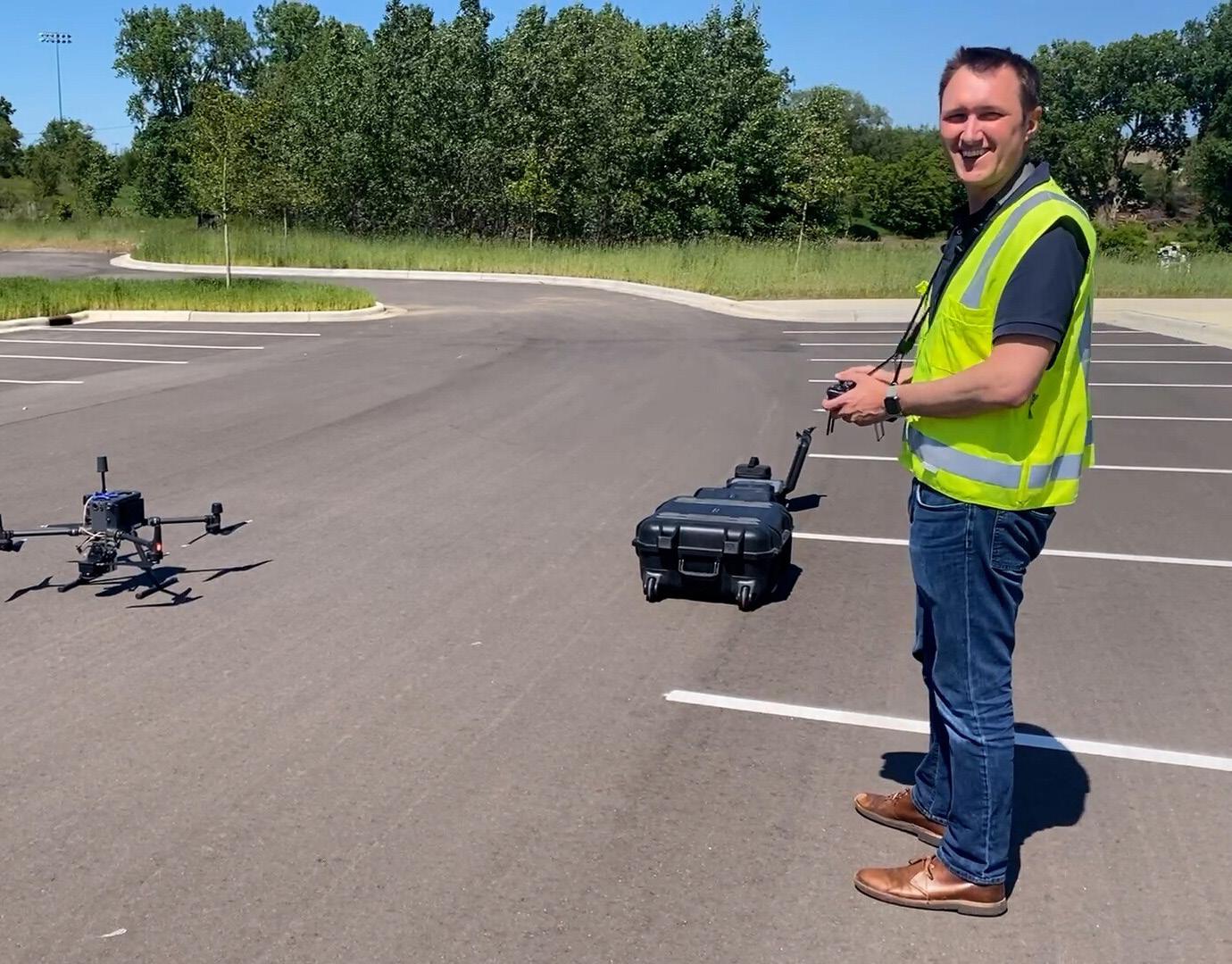









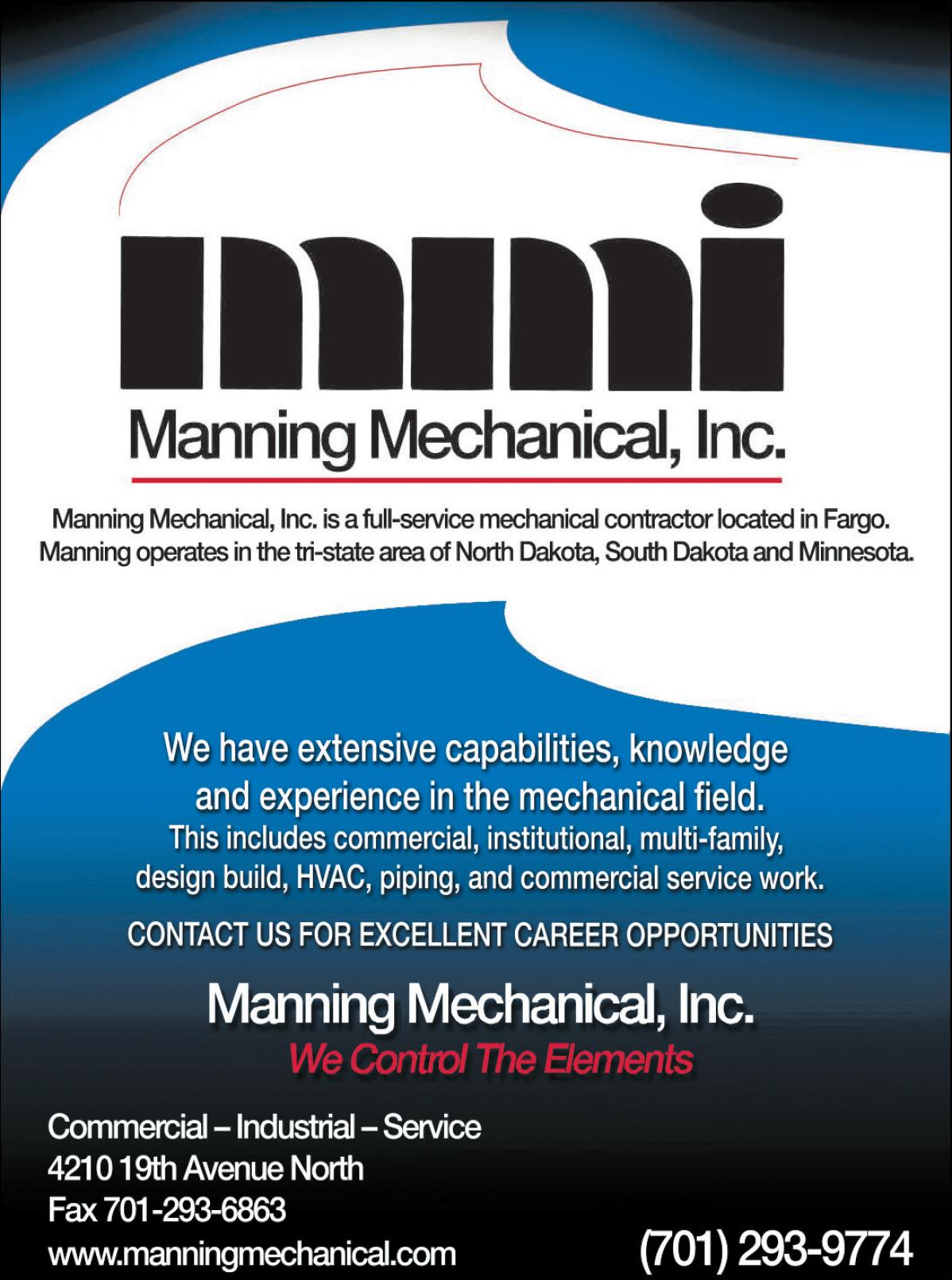









The manufac turing industr y faces unique challenges. O ur advisors work with you to develop financial, operational, and technological strategies that drive success.



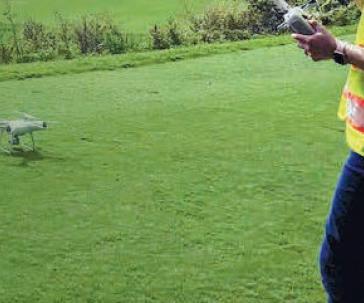









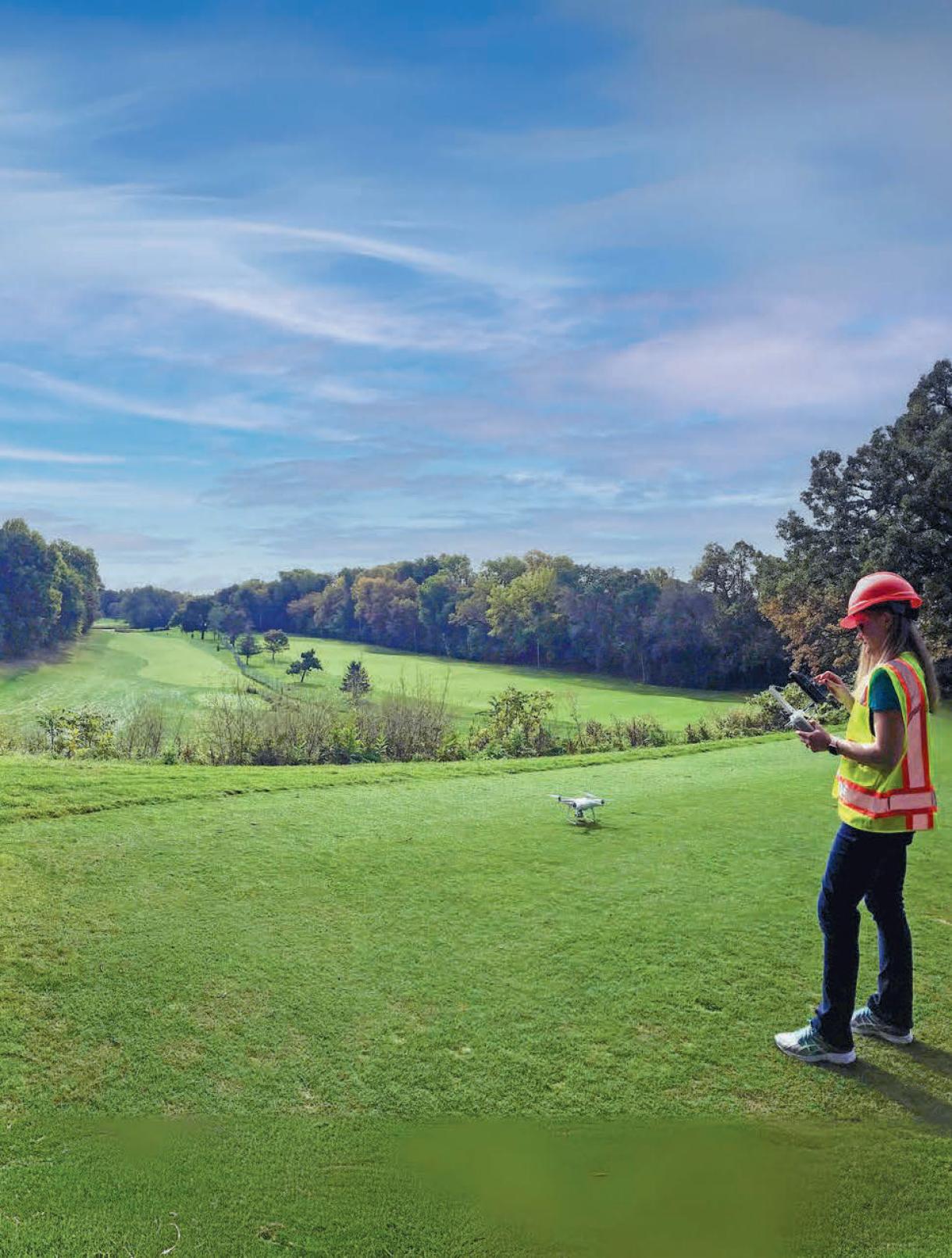



BY ANDREA BORSVOLD
The art of manufacturing is turning raw materials into finished, sellable products for use every day around the globe. Thirteen million people are employed by manufacturers throughout the United States, with an estimated three million new positions expected in the next decade. Just within the Upper Midwest, manufacturers employ almost 10% of the workforce in Minnesota, North Dakota and South Dakota alone, according to the National Association of Manufacturers. And like any other industry today, the need for workers is great as the unemployment rate has risen to 4% (Bureau of Labor Statistics), though the numbers are nearly half that in the three states individually.
Since the pandemic, the issue of delayed or broken supply chains has played heavily on manufacturing abilities, though some of that can be blamed on a lack of workforce among suppliers, as well. The products these manufacturers produce help make other industries work better and more efficiently, and so the domino effect continues.
What are manufacturers to do in a time when workers are hard to find and the work is plentiful? Some have offered excellent hiring and moving bonuses to entice new employees, though those one-time compensations do not always last long enough to retain them. Some employers offer onthe-job training. They are willing to train hard-working, willing individuals, and yet others will reach out to today’s young people, offering tours and internships to pique the interest of the impending workforce.
The good news is that the future looks good for upcoming high school graduates. The young workforce coming up has their eyes on trade jobs more than strictly a four-year college degree.
Becky Hauschild, communications director of the Midwest Manufacturers’ Association (MMA), said the opportunities trade schools and career tech programs can offer can be more attractive and within reach for some students.
“We went through decades where we were so focused on college. Now everyone is seeing the light on how skilled trades can be such a great opportunity and not have as much debt as from a college education. Manufacturers are doing a better job at working with their local high schools as Career Technical Education (CTE) programs are taking off like crazy. Vocational and technical college programs that are manufacturing-related are booming. It’s being recognized that manufacturing can be a great career.”
MMA has 533 member manufacturers throughout the Midwest, helping them through four major pillars – workforce development, advocacy, member education and networking, and strategic partnership. According to its website, MMA not only offers free job postings and K-12 membership but also grants and scholarships, as well as advertising in-person student and community tours. National Manufacturing Week is Oct. 4-11, though Central Minnesota will be celebrating a week early with additional tours spotlighting local manufacturers and a virtual magazine, Manufacturing Week, put out by CMMA (Central Minnesota Manufacturers Association).
Bill Moser, operations manager of CNH in Fargo, North Dakota, echoed the sentiment about college.
“It’s not always about needing to get a four-year degree to have a good living. There are many great opportunities in manufacturing, whether it’s welding, machining or assembly, that will provide a good living,” he said.
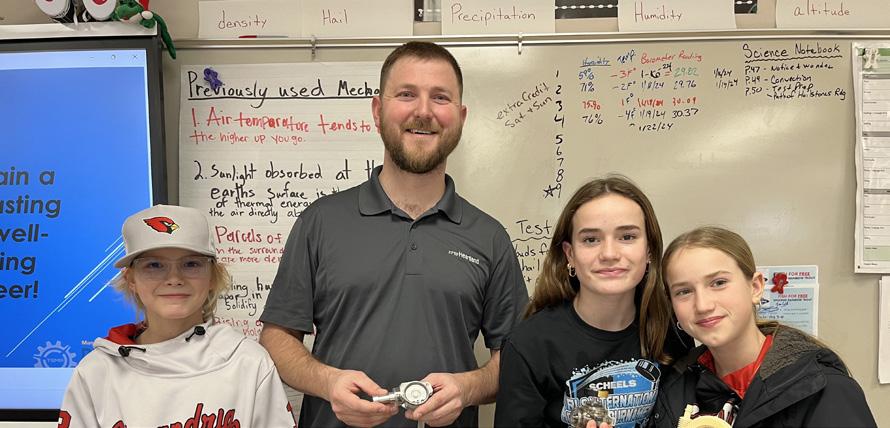
JASON CRANNELL, TRI-STATE MANUFACTURING ASSOCIATION’S MANUFACTURING CAREER DREAM TEAM MEMBER AND MANUFACTURING ENGINEER FROM ITW HEARTLAND, MET WITH AN ENTHUSIASTIC CREW OF SIXTH-GRADE STUDENTS FROM DISCOVERY MIDDLE SCHOOL IN ALEXANDRIA, MINNESOTA. HE SHARED ABOUT THE MANY JOB OPPORTUNITIES IN MANUFACTURING AND THE EDUCATIONAL PATHS LEADING TO A MANUFACTURING CAREER. / COURTESY MIDWEST MANUFACTURERS’ ASSOCIATION
Moser spoke highly of how CNH, the global manufacturer of agricultural and construction equipment, has handled this lack of workforce.
“We have to adapt to the changing times and that is one of the things that we’ve done well. We’ve heavily invested in workforce training and developed an enhanced welding program that has allowed us to train 85 of the 150 welders on-site,” he said. “To achieve this, we have worked hand-in-hand with Lynnes Welding (Training), hiring people who will then go through a fiveweek training program to teach them how to weld. Afterwards, they take a certification test and then they will come to the floor and start welding. If we hadn’t developed that program, we wouldn’t be building like we are today.”
CNH-Fargo primarily builds four-wheel drive tractors and wheel loaders, with some of the cabs being sent to their next nearest plant in Benson, Minnesota, for use with the field sprayers built there.
Marvin Windows and Doors of Warroad, Minnesota, offers both the public and potential customers and employees alike the chance to tour the William S. Marvin Training and Visitor Center. Certain large groups can be flown on a Marvin-owned airplane from the Twin Cities to visit the Warroad plant. They see numerous architects, builders and dealer partners who are interested in finding out about new products, learning new installation techniques, and understanding the latest techniques.
“We have hundreds of kids going through our facilities both here in Fargo and in Warroad alike just to see what manufacturing is all about and what opportunities there might be for them,” Chris Barta, senior director of operations at Marvin’s Fargo facilities, said. “We work really hard to help them figure out what they want to do with their life, whether it’s with us or not, whether it’s in engineering or not. I tell the interns each summer ‘I used to be you,’ as I have been with this company for 32 years now and have sort of grown up here. It’s a great place to work. They take care of their folks, and have forever, and I’m proud of that.”
Marvin builds wood, aluminum and fiberglass windows and doors, un like the typical vinyl products we see today, and was recently recognized by Forbes as one of the Top 20 in the America’s Best Large Employers of 2024 list.
To reach those additional three million manufacturing jobs in the next de cade, manufacturers will need to continue to build on their current schemes of reaching the youth in their schools, promoting tours of their plants, and offering paid training on-site. The opportunities are endless for skilled trade jobs to those who pursue such callings and with little to no education or for mal training necessary to start. Manufacturers continue to power and build the world, starting with building workforces from within.
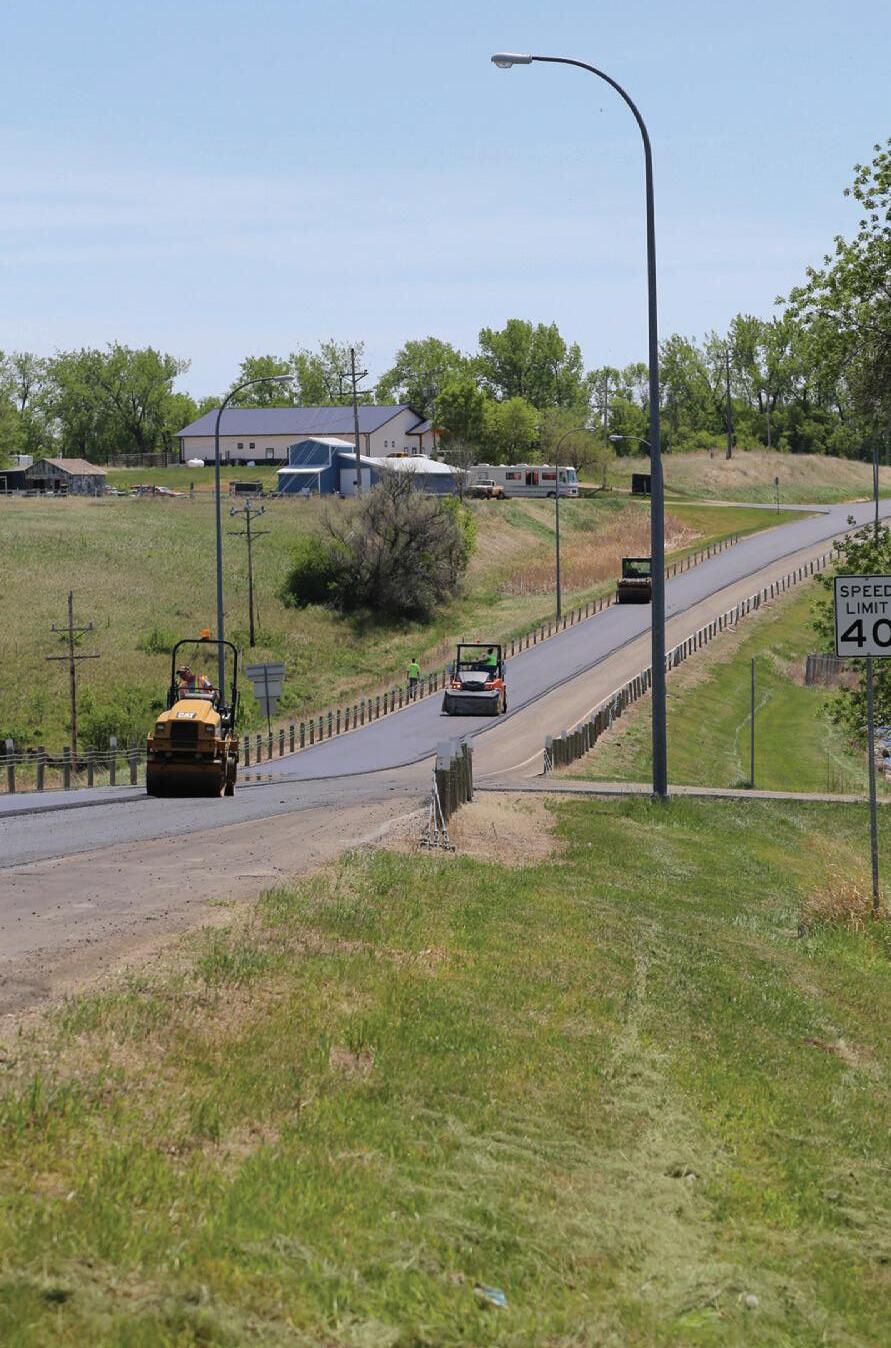
Understanding the intricacies of maintaining or replacing aging infrastructure can be daunting. Let our engineering and architecture experts advocate for you as we work toward effective and affordable solutions for your communities.




















BISMARCK, N.D. • The travel and tourism economy in North Dakota surpassed pre-pandemic levels in 2023, according to a new report released by the North Dakota Department of Commerce. The number of visitors to North Dakota increased by 1.3 million travelers, reaching a total of 25.6 million visitors in 2023. Those visitors spent more than $3.3 billion in the state in lodging, food and beverage, retail, recreation and transportation.
“When we released our annual report this spring, we knew that 2023 had been a strong year for travel in North Dakota. This study now confirms it was the most visited year to date. The travel and tourism economy in North Dakota is still so young compared to other destinations, and with the development on the horizon and the visitor interest in North Dakota, the growth potential for our economy is huge,” said Tourism and Marketing Director Sara Otte Coleman.
The Commerce Tourism and Marketing Division worked with national vendor, Tourism Economics, an Oxford Economics Company, to monitor the state’s visitor economy. Results are used to carefully monitor industry progress, successes and future needs. Key findings from the economic report include:
• Visitation grew 5.3%, or 1.3 million travelers, reaching 25.6 million visitors in 2023.
• Visitor spending grew to $3.3 billion, an 8.8% average growth across all counties.
• Day travel growth continued to outperform overnight stays, with 17.8 million visitors making day-trips to the state.
• Cass County continued to lead the state in visitor spending, at almost double the revenue of second-most visited, Burleigh.
• The hospitality industry was one of the most impacted by closures during

the pandemic. Employment in the industry is still below 2019 levels.
• Visitors paid more than $307 million in local and state taxes, creating a $960 per household savings for North Dakotans.
The 2023 Annual Report highlights additional visitation performance, advertising and promotional impacts. The only area of travel that hasn’t fully rebounded to pre-pandemic levels is Canadian visitation. While visits have steadily increased since the border reopened to recreational travel in late 2020, visitation is still only 80% of 2019 numbers.
“We believe the exchange rate and inflation has a lot to do with this slower recovery,” Otte Coleman said.
Visitation and visitor-interest remains high. Through the first five months of the year, there
has been a 1.1% increase in trips and North Dakota has outperformed the U.S. in hotel occupancy and revenue growth. Website traffic to NDtourism.com is 48% higher than a year ago. Otte Coleman also points out the opportunity for tourism to influence the state’s workforce recruitment.
“We know that nearly 80% of new residents are visiting the state before they move here. The amenities we enjoy as residents are the same ones that visitors enjoy. The synergy between tourism and recruitment to our communities and employers is high, and we’re blending a lot of our marketing as a result,” she said.
Tourism Economics works with hundreds of national and international tourism offices to assess economic impact through a Tourism Satellite Account (TSA), known as the global standard for measuring the economic value of tourism. North Dakota’s Department of Commerce has worked with Tourism Economics since 2015.





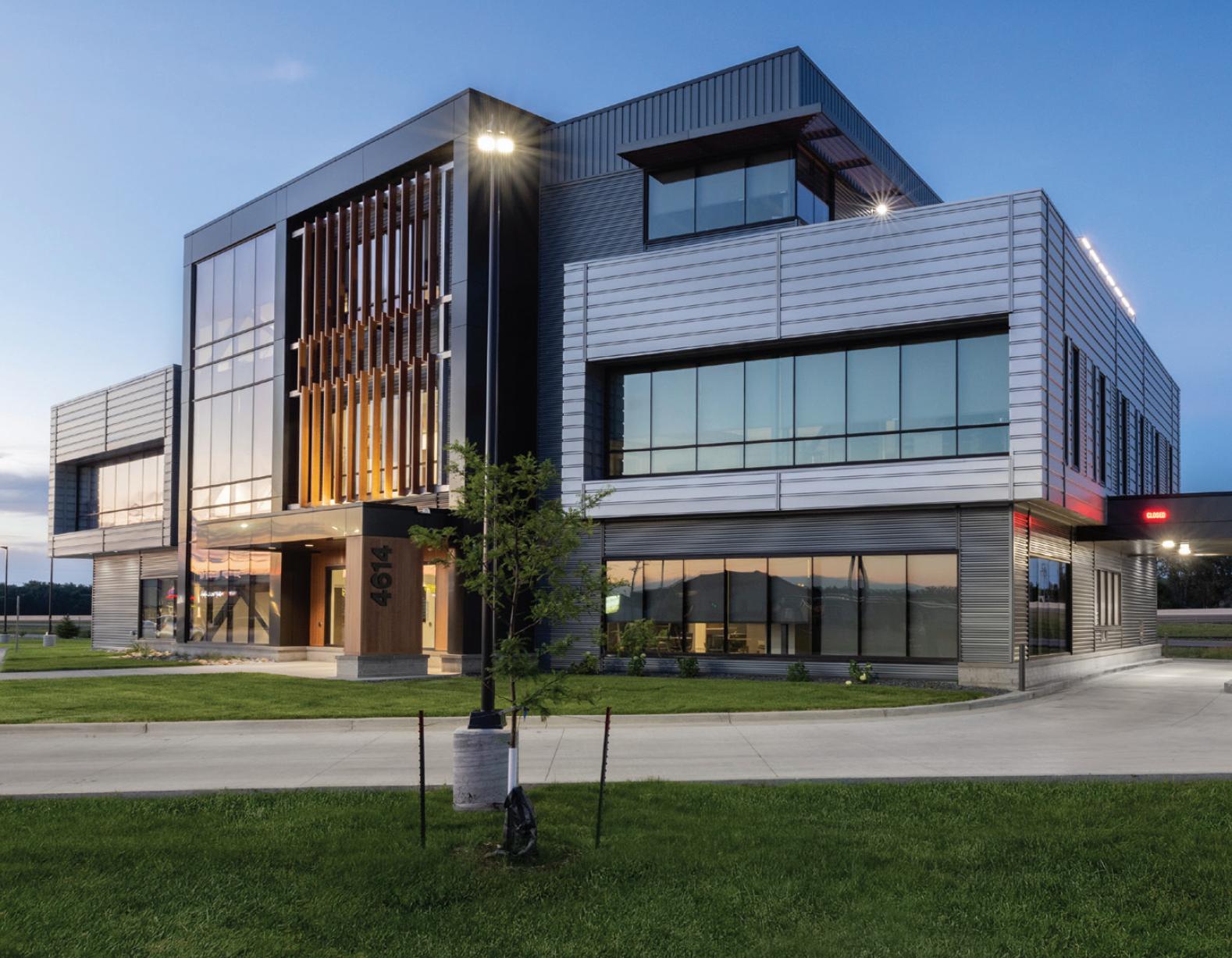
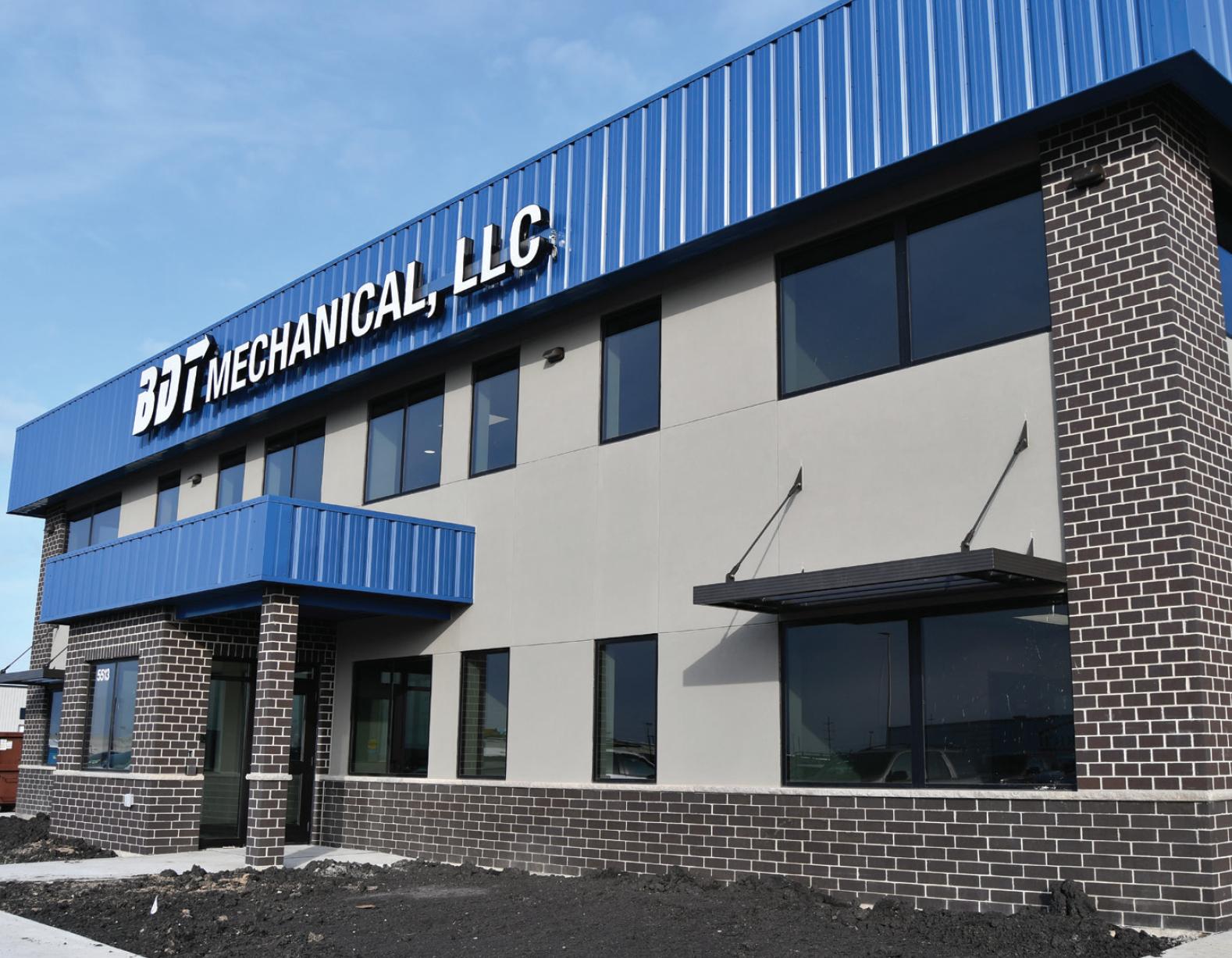



WEST FARGO, N.D. • The Greenhouse, the region’s premier business coaching and strategic management consulting group, is excited to announce the addition of Aimee Smith to its dynamic team as operations manager and client liaison. Smith brings with her to The Greenhouse almost two decades of knowledge in project management and client services. She started her career working for non-profit organizations and moved over to the corporate sector in advertising/marketing. She has worked with
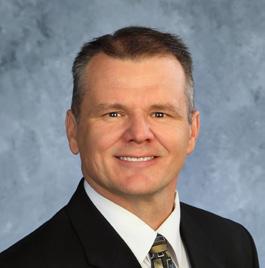
GRAND FORKS, N.D. • Randy E. Morehart, executive vice president of Frandsen Bank & Trust, has announced that John Votava has been promoted to market president of the Grand Forks office.
“We are proud to promote John Votava, an experienced professional with a wealth of knowledge, to the esteemed position of Market President of the Grand Forks office. This promotion is a testament to John’s dedication and the trust we have in his leadership abilities,” Morehart said.
Votava has 29 years of experience in banking, with the past 19 years spent at Frandsen Bank & Trust. His knowledge is quite diverse, having worked in various roles, such as an entry-level teller while he was in college and most recently as vice president of business/ag lending in the Grand Forks market. He is also an active member of the community and serves on the board of directors for the Masonic Malta Lodge No. 131 and the Kem Shrine. He is a Shrine Units, Mobil Nobles, and the Kem Band member.
Votava and Kim reside in Grand Forks and have two grown children. Having grown up in the area, he is strongly committed to the community.
hundreds of clients in various industries including: banking, manufacturing, healthcare, B2B and B2C. Over her career, Smith has had the opportunity to work on two Emmy Award-winning documentaries as well as work on TV shows on The History Channel and Discovery Health as an associate producer. Nationally and internationally, she’s brought her knowledge and attention to detail to manage projects, budgets and clients with a positive attitude and always a smile on her face. Smith lives by the motto every day, “It’s all in the details.”
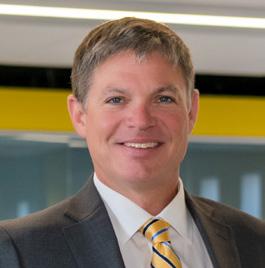
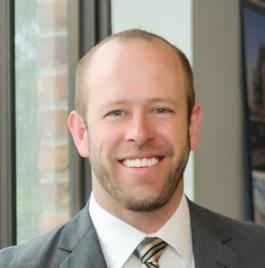
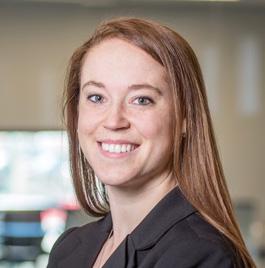
SIOUX FALLS, S.D. • Architecture Incorporated proudly recognizes Jason Pittmann, Colby McGinley and Ally Hatcher for their achievement in passing their architect registration exams to become fully licensed architects. Working diligently from our Sioux Falls office, these three individuals have dedicated themselves to rigorous study and preparation for these exams. We commend each of them for their unwavering determination, steadfast dedication, and exemplary commitment. Congratulations, Jason, Colby, and Ally.
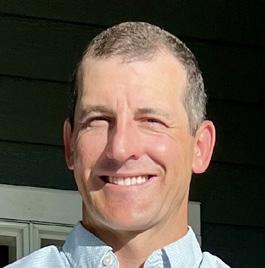


MANDAN, N.D. • Interstate Engineering expands its Mandan, North Dakota, and marketing team with the addition of Michael Hardy as a senior graphic designer. He is a Minot State University graduate with over 14 years of experience. He specializes in graphic design, audio/video production, and print production, to name a few. His knowledge and drive to succeed will make him a valuable addition to the firm.
WAHPETON, N.D. • Interstate Engineering is pleased to announce that Amy Kronbeck has joined the Wahpeton office as a landscape architect. She graduated with a master’s degree in landscape architecture and has two years of experience. She chose landscape architecture because it blends her love of community, nature, and planning into incredible design opportunities. Her knowledge and drive to succeed will make her a valuable addition to the firm.
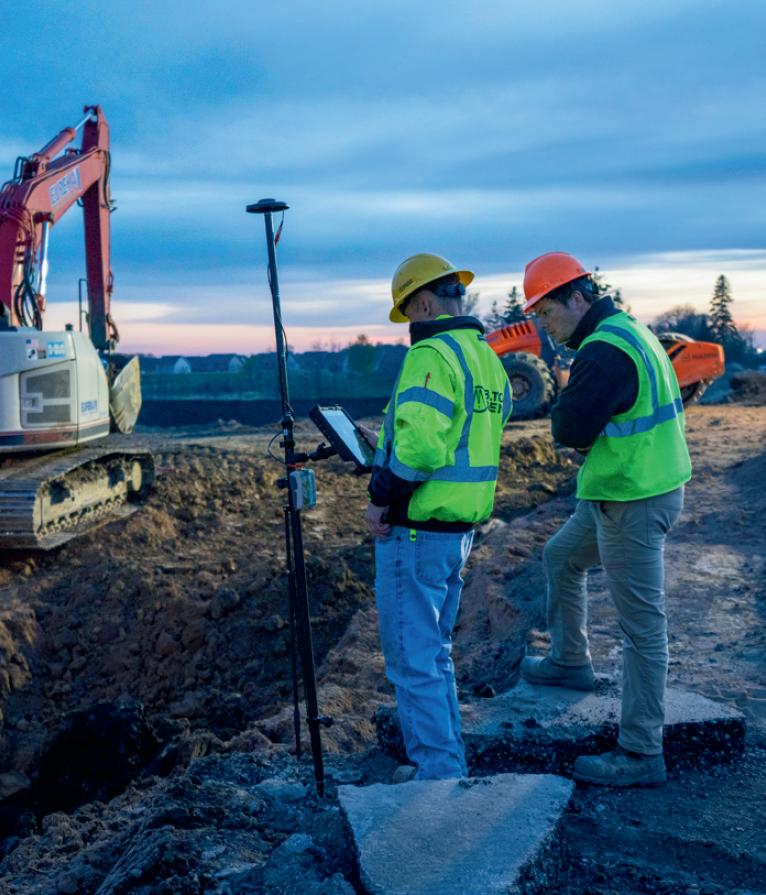

MINOT, N.D. • Ackerman-Estvold is pleased to announce that Emma Lavachek recently earned her North Dakota Professional Engineer registration from the North Dakota State Board of Registration.
Lavachek has been with Ackerman-Estvold since 2018 as a full-time civil engineer with a focus on municipal projects for cities and municipalities and serving as city engineer for some of the smaller rural clients. In addition, she spent four years as a summer intern with the company before graduating which provided a lot of experience in the field gaining knowledge in construction, inspection, and project workflow.
Lavachek earned a Bachelor of Science degree in civil engineering from North Dakota State University in Fargo, North Dakota.



Nikki Krueger Director of Communications Energy & Environmental Research Center
Grand Forks, N.D.
When first meeting a new manager, employees are looking for two key impressions: whether they can trust and respect you. Cultivating connections in the first 30 days lays a foundation for successful teamwork and trust in your leadership. As an affiliative leader, my approach is to meet with the team members individually and as a group and get to know their roles, strengths, and goals. Spend time observing your team’s dynamics and what is expected of them from the organization. It’s also essential to share your leadership style with the team and ask for feedback. Inform them of your work style and communication preferences to set them up for success. Most importantly, listen. Be curious and ask questions to demonstrate that you value their experience and input.
Becoming a manager can be exciting yet stressful. You worked hard gaining leadership experience and making connections and your first day as a manager has finally arrived. What you do in the first 30 days will set the foundation for your leadership and earn the trust and respect of your team. Here are a few actions to consider:
• Understand your team: Take time to schedule weekly one-on-ones with each team member to learn about their role, strengths, challenges and career aspirations. Ask what you can do to help them be successful and understand what motivates them.
• Build relationships within the organization beyond your team: Get to know key stakeholders and other influential colleagues. Use these relationships as your support network and break down silos.
• Meet with your leader: Set up weekly one-on-ones with your leader to align organizational goals and to create an environment of upward communication.
• Learn the processes: Learn about existing workflows, procedures and systems. This will help you identify areas for improvement. Don’t be afraid to ask questions. Your team will appreciate your interest in their work.
• Look for some quick wins: Seek opportunities where you can make immediate positive changes or improvements. This helps build your credibility and momentum early.
New managers may feel that they aren’t contributing to the success of the team because they are no longer the ones in the trenches producing the deliverables. As a manager, your job is to set goals, break down barriers and identify efficiencies to help your team perform at their very best. When you focus on that everyone wins.


At Bobcat, our success is driven by the dedication and passion of our people. We support new leaders through mentorship and investment in various development programs and learning tools. The first 30 days for a new manager can differ whether they are transitioning from within the organization or joining us from outside. Regardless of their background, the initial step is to understand our mission, values and strategic goals of the organization and how to translate those goals to their team’s actions.
Building relationships is also key. We encourage new managers to schedule one-on-one meetings with their team members to get to know each other, build trust, understand roles, strengths, challenges and expectations, while familiarizing themselves with existing workflows, procedures and tools. Beyond their immediate team, we encourage new managers to connect with others throughout the organization.
Setting clear objectives is vital. New managers at Bobcat are encouraged to establish and communicate team goals and priorities. Assessing the team’s strengths and challenges is important, as well as understanding what is working and what opportunities exist for improvement.
Demonstrating leadership is critical. New managers are encouraged to lead by example by showing commitment, reliability and a positive attitude, and encouraging their team in open dialogue. By focusing on the company’s purpose, building relationships and demonstrating leadership, a new manager can build trust, gain valuable insights and set the stage for long-term success. As we continue to evolve and grow, we are committed to providing our people with opportunities for a successful career and future at Bobcat.

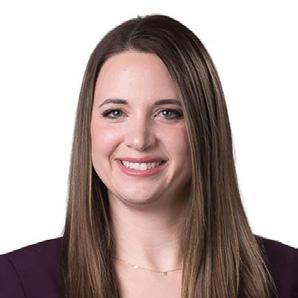
Erica Bjerrum, CPA Partner, Business Valuation and Consulting
Eide
Bailly LLP
Sioux Falls, S.D.
Being promoted from senior associate to manager is a significant milestone in one’s public accounting career. Here are a few key things that new managers should do in their first 30 days to ensure success in this new role:
• Establish transparent communication. A manager serves as a crucial link between staff and senior management. Establishing transparent communication and offering constructive feedback contributes to a collaborative work atmosphere and lays the groundwork for continued achievement.
• Focus on relationships. A manager is a trusted advisor whom clients can rely on for guidance during pivotal moments. We encourage managers to continue building their interpersonal skills, which will set them up for success throughout their entire career.
• Ask questions. At Eide Bailly, even if one does not have immediate answers, there is a network of knowledgeable professionals ready to assist. The key is to maintain a sense of curiosity and a commitment to learning, which enables one to ask the right questions and provide solutions that align with the clients’ visions and objectives.
• “Aim to simplify a partner’s workload.” This is a piece of wisdom that greatly benefited me when I was early on in my manager position. Assume the mantle of client communications whenever possible and strive to operate independently.
In the early days of this new role, it’s important to embrace the responsibilities, seize the opportunities, and navigate through the challenges that come with it. Remember: if you have been promoted to manager, you have the skill set to do the work that is on your plate. Remain confident in the abilities and strengths that led you to this promotion in the first place.

The Producer Price Index for final demand advanced 0.2% in June, seasonally adjusted, the U.S. Bureau of Labor Statistics reported. Final demand prices were unchanged in May and increased 0.5% in April. On an unadjusted basis, the index for final demand rose 2.6% for the 12 months ended in June, the largest advance since moving up 2.7 % for the 12 months ended March 2023.
Total nonfarm payroll employment increased by 206,000 in June, and the unemployment rate changed little at 4.1%. Among the major worker groups, the unemployment rates for adult women (3.7%) and Asians (4.1%) increased in June. The jobless rates for adult men (3.8%), teenagers (12.1%, Whites (3.5%), Blacks (6.3%), and Hispanics (4.9%) showed little or no change over the month.
The Consumer Price Index for All Urban Consumers (CPI-U) declined 0.1% on a seasonally adjusted basis, after being unchanged in May. Over the last 12 months, the all items index increased 3% before seasonal adjustment. The index for gasoline fell 3.8% in June, after declining 3.6% in May, more than offsetting an increase in shelter. The energy index fell 2.0% over the month, as it did the preceding month. The index for food increased 0.2% in June.
Total nonfarm payroll employment increased by 206,000 in June, similar to the average monthly gain of 220,000 over the prior 12 months. In June, job gains occurred in government, health care, social assistance, and construction. Government employment rose by 70,000 in June, higher than the average monthly gain of 49,000 over the prior 12 months. Health care added 49,000 jobs in June, lower than the average monthly gain of 64,000 over the prior 12 months. Employment in social assistance increased by 34,000 in June, primarily in individual and family services (+26,000). Construction added 27,000 jobs in June, higher than the average monthly gain of 20,000 over the prior 12 months.

Source:










